While cause marketing used to be a niche form of marketing primarily thought of in relation to nonprofits and NGOs, it has now fully entered the spotlight. Brands across industries have adopted cause marketing as a way to win brand loyalty from ever-more socially and environmentally conscious consumers. Consumers no longer see cause and brand purpose as a bonus, but as a prerequisite for choosing to support a brand.
If you’re looking to understand the benefits of cause marketing for your brand, you can check out this blog. Here, find the different types of cause marketing campaigns that your brand can tackle. Let’s get started!
Read next: 5 Examples of Brands That Got Cause Marketing Right
What is cause marketing?
Cause marketing is defined as the collaboration between a for-profit and a non-profit to educate people on the causes that need attention, what they’re all about, and the ways that they can help. Cause marketing is a powerful medium for consumer brands to serve as catalysts and critical platforms for broad public engagement and support for a cause or organization.
Today’s consumers have raised the bar, and are looking for brands to fill the gaps where other institutions may be failing. Cause marketing gives brands the opportunity to connect with their target audience through shared values and a dedication to the greater good.
Here are the top 8 types of cause marketing campaigns:
1. Charitable sales promotions
Charitable sales promotions might be the most common type of cause marketing campaigns in this list. This is when a brand makes a donation for each purchase from a customer, either for all products or for a specific cause-related product through a certain timeframe. This kind of cause marketing campaign allows for your brand to easily track the lift in sales the promotion brought in. It’s important to ensure that consumers are not misled by carefully outlining the promotion details, like the timeframe and the funding cap.
Related reading: 5 Cause Marketing Mistakes to Avoid in Your Next Campaign
2. Making a donation on behalf of employees
This type of cause marketing campaign is when a brand makes a donation to a certain cause on behalf of their employees, in lieu of employee or client gifts. This can be a good way for brands to demonstrate to both employees and consumers their commitment to a cause. This can boost employee morale and make them feel like they are a part of something bigger than themselves.
Read next: 5 Things Marketers Should Know About Teen Cause Marketing Campaigns
3. Promoting a challenge or match donation to employees and/or customers
This method of cause marketing doesn’t require a purchase, but does require consumer action. Using this method, brands promote a challenge for consumers to take part in, whether that’s posting a video to social media, hosting an event, or spreading the word. This method works because it motivates consumers to participate through inherent virality, but it is more challenging to directly tie to sales. A great example of this kind of campaign is ALS’ Ice Bucket Challenge campaign, or Mike’s Hard Lemonade “Share Some Pink” campaign.
4. Public Service Announcements
A public service announcement is a short, community-oriented message that media outlets air in order to fulfill their obligation to serve the public interest. These are great ways to raise awareness for social causes, and our most recent research indicates that PSAs are highly effective at motivating consumers to take action on certain causes.
In fact, according to our research, PSAs are among the top five information sources when learning about issues or causes that people care about. And not only are consumers getting information from PSAs, but PSAs are driving action. The Refuel Agency Social Cause study 2021 found that 4 out of 5 consumers have taken an action—whether that’s researching the issue, mentioning the issue to friends or family, or visiting the website—as a result of seeing the PSA.
5. Hosting a donation drive
In this type of cause marketing campaigns, brands encourage consumers to pledge support to a social issue or nonprofit partner. This is often accompanied by a corporate donation or incentive for each pledge. Consumers like this kind of campaign, as it gives consumers a voice. The challenge to overcome is that this type of campaign requires locationization to ensure the highest level of consumer relevance. One example is Starbucks’ “Pledge5” campaign.
6. Providing change collection devices or “round up” promotions
This kind of cause campaign is when brands allow consumers to “round up” their purchase amount, and the amount rounded up will be donated to a cause. The benefits of this kind of campaign is that it’s very easy for consumers to get involved, and it easily raises awareness for causes.
Read next: Cause Marketing and COVID-19: How the Pandemic Ushered in a New Era of Brand Purpose
7. Volunteerism Rally
This cause promotion involves encouraging consumers to donate their time in support of a social cause. In return for their time, your brand donates complementary goods or services. This gives brands the opportunity for highly localized consumer engagement and impact, but the barrier to entry is that there is a high level of consumer commitment required. One example of this kind of campaign is Disney’s “Give a Day, Get a Disney Day” campaign.
8. Buy One, Give One (BOGO) Method
This form of cause marketing campaigns is when a consumer purchase is directly equated to a donation, like one dollar equals one tree planted. The benefit of this kind of campaign is that consumers are very responsive to tangible, immediate results, and it’s inherently feel-good to know exactly what impact your purchase is making. The challenge here is that it can be difficult to translate outputs and the actual cost of the individual items being donated. One example is Targets’ “Bullseye Gives” campaign.
Looking to Refuel your cause marketing campaigns? Take a look at our cause marketing portfolio, and contact us today to receive your custom media plan for targeted impact.



![Read more about the article How Brands Can Give Back to Their Customers This Giving Tuesday [Resources Included!]](https://www.refuelagency.com/wp-content/uploads/2020/11/iStock-1064841594-e1604617499760-768x614.jpg)